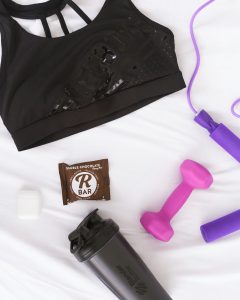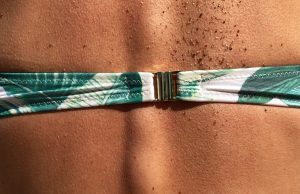How to stop shoes rubbing side of ankle 2024
If you’ve ever worn a shoe that rubs the side of your ankle in just the wrong way, you know the feeling of discomfort it brings and how hard it can be to focus on anything else. Unfortunately, shoes that rub against your ankles are an all too common problem for many people – regardless of what type of shoe they’re wearing or if their feet are wide or narrow. Fortunately, there are several different solutions to this annoying issue that can provide lasting relief and help stop shoes rubbing against your skin once and for all. Keep reading to learn more about easy tips and tricks for preventing feet-related frustration!
Assessing the Cause of Rubbing
Before you can solve a problem, it’s important to understand what’s causing it in the first place. In this case, we need to determine why your shoes are rubbing against your ankles. The most common causes include:
- Ill-fitting shoes: Shoes that are too tight or too loose can cause friction against your skin.
- Poorly designed shoes: Some shoe styles are inherently more prone to causing rubbing, such as shoes with stiff or rough materials.
- Foot shape and pronation: The way your foot is shaped and how it impacts the movement of your ankle can also contribute to friction against your skin.
To assess the cause of your shoe rubbing, try wearing different types of shoes to see if the issue persists. If you notice that only certain types of shoes cause rubbing, then it’s likely an issue with the shoe itself rather than your foot.
1. Identifying Friction Points
Once you’ve determined that your shoes are indeed the culprit of your ankle rubbing, it’s time to pinpoint exactly where the friction is occurring. This can help you to better understand why it’s happening and what measures you can take to fix it. For example, if the friction is occurring on a specific bony protrusion on your ankle, then adding extra padding in that area might be helpful.
2. Examining Shoe Design
As mentioned earlier, certain shoe designs are more likely to cause rubbing than others. Pay attention to the materials and construction of your shoes to determine if there are any potential problem areas. Common design issues include seams that rub against your skin, stiff or unforgiving materials, and poorly placed straps or buckles.
3. Considering Foot Anatomy
In some cases, your foot shape and pronation can contribute to shoe rubbing. For example, those with flat feet or wide ankles may have a more difficult time finding shoes that fit properly. If you suspect this might be the case for you, it’s worth consulting with a podiatrist or trying orthotic inserts to help improve the fit of your shoes.
Prevention Before Wearing
1. Choose Well-Fitted Shoes
One of the most effective ways to prevent shoes from rubbing against your ankles is to ensure that you’re wearing properly fitting shoes. This means choosing a shoe size that accommodates the length and width of your feet, but also taking into account any potential foot issues such as bunions or high arches.
2. Test Shoes Before Purchase
Before committing to a new pair of shoes, try them on and walk around the store for at least 10-15 minutes. This will give you a good idea of how the shoe feels and whether or not it’s likely to cause rubbing in the long run.
3. Consider Shoe Inserts or Padding
If you struggle with finding well-fitted shoes, consider using inserts or padding to help customize the fit. Gel pads and cushioned insoles can provide added comfort and support, while moleskin or other types of padding can help protect your skin from friction.
Softening Leather Shoes
1. Leather Conditioning
For leather shoes, one of the most effective ways to prevent rubbing is to soften the material. This can be done through regular conditioning with a leather cream or oil. It’s important to note that this method may not work for all types of leather, so be sure to check with the manufacturer first.
2. Using Leather Stretching Sprays
Another option for softening leather shoes is to use a leather stretching spray. These can help to loosen the material and make it more pliable, reducing friction against your skin.
3. Freezing Leather Shoes
Yes, you read that right. Freezing your leather shoes can actually help to soften them and reduce rubbing. Simply fill a plastic bag with water, place it inside the shoe, and then put it in the freezer overnight. As the water expands, it will stretch the leather and make it more comfortable to wear.

Adjusting Lacing Techniques
1. Loosening or Tightening Laces
If you find that your shoes are rubbing against your ankles due to an ill-fitting shoe, adjusting the laces can help. Try loosening or tightening them in different areas to find a better fit and reduce friction.
2. Trying Different Lacing Patterns
Along with adjusting the tightness of your laces, you can also experiment with different lacing patterns. For example, a “lace-lock” technique can help to prevent slippage and reduce rubbing on the ankle.
3. Utilizing Lace Locks or Heel Grips
For added security and comfort, consider using lace locks or heel grips. These can help keep your foot in place within the shoe and minimize friction against your ankles.
Using Protective Products
1. Moleskin or Gel Pads
As mentioned earlier, moleskin or other types of padding can be used to protect your skin from rubbing. These products are typically self-adhesive and can easily be cut to fit the specific areas of your foot that need protection.
2. Adhesive Bandages
For smaller areas of rubbing, adhesive bandages can also be used to provide a cushion between your skin and the shoe. They are discreet and easy to apply, making them a convenient solution for on-the-go.
3. Specialty Blister Prevention Products
There are also specialty products available specifically designed to prevent blisters and friction on your feet. These may include blister sticks, anti-friction balms, or spray-on solutions. Be sure to read reviews and consult with a healthcare professional before trying these products to ensure they are safe for your skin.
Socks Matter
1. Choosing the Right Socks
Believe it or not, the type of socks you wear can have a big impact on reducing friction against your ankles. Opt for socks made with moisture-wicking materials and avoid those with bulky seams that may rub against your skin.
2. Double-Layer Socks
Another option for reducing friction is to wear double-layer socks. These have a thin inner layer that helps to prevent rubbing against your skin, while the outer layer provides added cushioning and support.
3. Toe Socks
If you frequently experience rubbing between your toes, consider switching to toe socks. They can help separate your toes and reduce friction in this area.
3. Moisture-Wicking Socks
Sweaty feet can also contribute to rubbing and blisters. To combat this, choose socks made with moisture-wicking materials that will keep your feet dry and reduce friction.
Breaking in Shoes
1. Gradual Wear
New shoes can often be stiff and uncomfortable, leading to blisters and rubbing. To avoid this, try breaking in your shoes gradually by wearing them for short periods of time before committing to a full day of wear.
2. Short Walks and Wear at Home
Another way to break in shoes is to wear them on short walks or around your house before wearing them outside. This will give your feet time to adjust to the shoe and help prevent any potential rubbing.
3. Flexing and Bending the Shoes
Flexing and bending the shoes can also help to soften them and make them more comfortable. You can do this by using your hands or wearing the shoes while doing some light exercises, such as squats or lunges.
Heel Grips and Inserts
1. Applying Heel Grips
If your heels are slipping out of your shoes, heel grips can help to keep them in place and prevent rubbing. These can be easily applied to the back of your shoe and will provide added support and cushioning.
2. Using Cushioned Inserts
For added comfort and support, consider using cushioned inserts in your shoes. These can help fill any gaps and provide additional padding to reduce friction against your skin.
3. Custom Orthotics
If you have ongoing issues with rubbing and discomfort, it may be worth investing in custom orthotic inserts. These are specially made to support your feet and can help alleviate any foot-related problems that may contribute to rubbing. Overall, prevention is key when it comes to reducing rubbing and blisters on your ankles from shoes.
Professional Adjustments
1. Consulting a Shoe Repair Professional
If none of the above methods are working for you, it may be time to seek help from a professional shoe repair specialist. They can offer advice and potentially make adjustments or modifications to your shoes to improve their fit and reduce rubbing.
2. Adding Padding or Inserts
A shoe repair professional can also add padding or inserts to your shoes for added comfort and support. They may also be able to stretch out tight areas of the shoe that are causing rubbing.
3. Stretching or Adjusting the Shoe
In some cases, a shoe repair professional can stretch or adjust certain areas of the shoe to make it more comfortable and reduce rubbing. This may be necessary for shoes made with less flexible materials or for those who have specific foot-related issues that need to be accommodated. It’s important to note that these adjustments may come at an additional cost, but it could be worth it for the comfort and prevention of rubbing on your ankles.
Signs to Watch For
1. Recognizing Discomfort
It’s important to listen to your body and recognize when a shoe is causing discomfort or rubbing. If you start to feel pain, irritation, or see redness on your ankles, it’s likely that the shoes are not fitting correctly and may need adjustments.
2. Addressing Persistent Issues
If you consistently experience rubbing and blisters on your ankles, it may be a sign of an underlying foot-related issue. In this case, consult with a healthcare professional to address the root cause and find a solution that works for you.
3. Regularly Checking Shoes
Finally, it’s important to regularly check your shoes for any signs of wear and tear or areas that may be causing rubbing. This will help catch any potential problems before they become bigger issues and ensure that you are wearing comfortable and well-fitting shoes. By taking the time to properly protect and care for your ankles while wearing shoes, you can avoid the discomfort of rubbing and blisters, and enjoy your activities without any added pain or irritation.
Conclusion
In conclusion, taking care of your feet and choosing the right shoes are crucial steps in preventing rubbing and blisters on your ankles. From selecting the right type of socks to breaking in shoes gradually, these small adjustments can make a big difference in your comfort level. However, if problems persist, don’t hesitate to seek help from a professional shoe repair specialist or healthcare professional. By being mindful of your feet and regularly checking for any discomfort or wear and tear, you can enjoy pain-free activities and take on the day with ease. So let’s put our best foot forward (pun intended) and keep our ankles happy and healthy! The end. Keep on walking!
Previous post: How should loafers fit 2023






